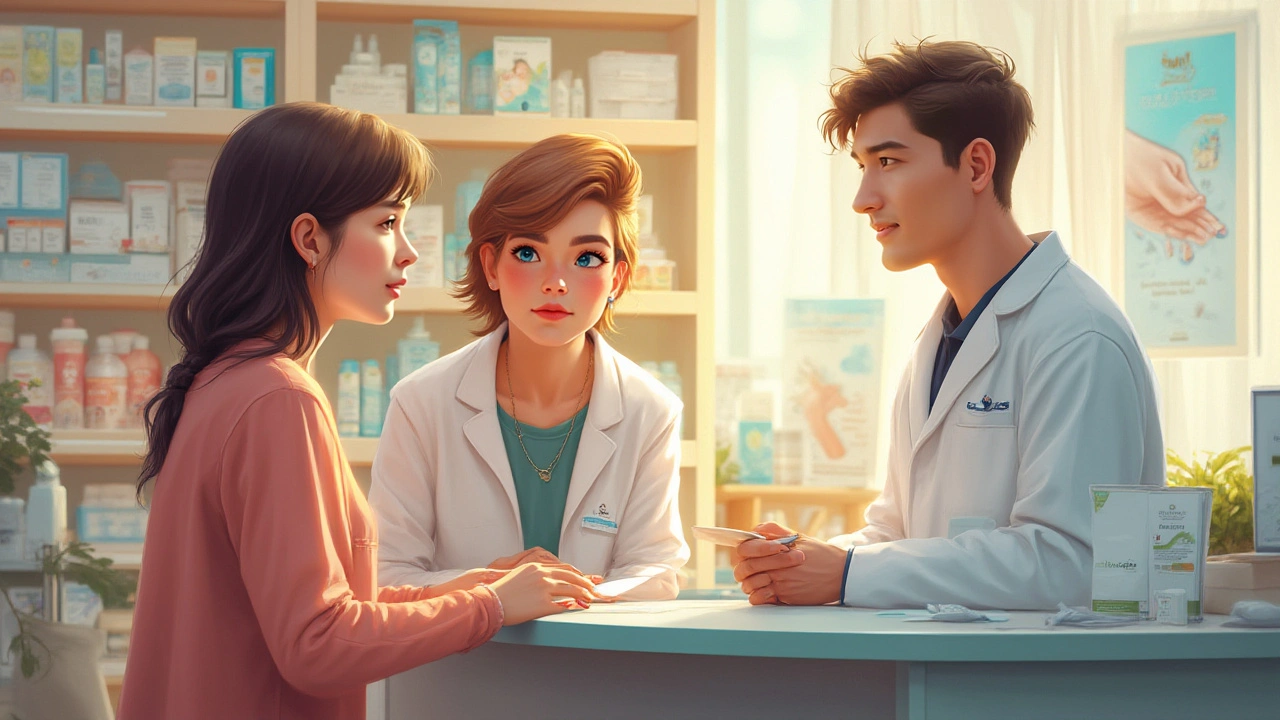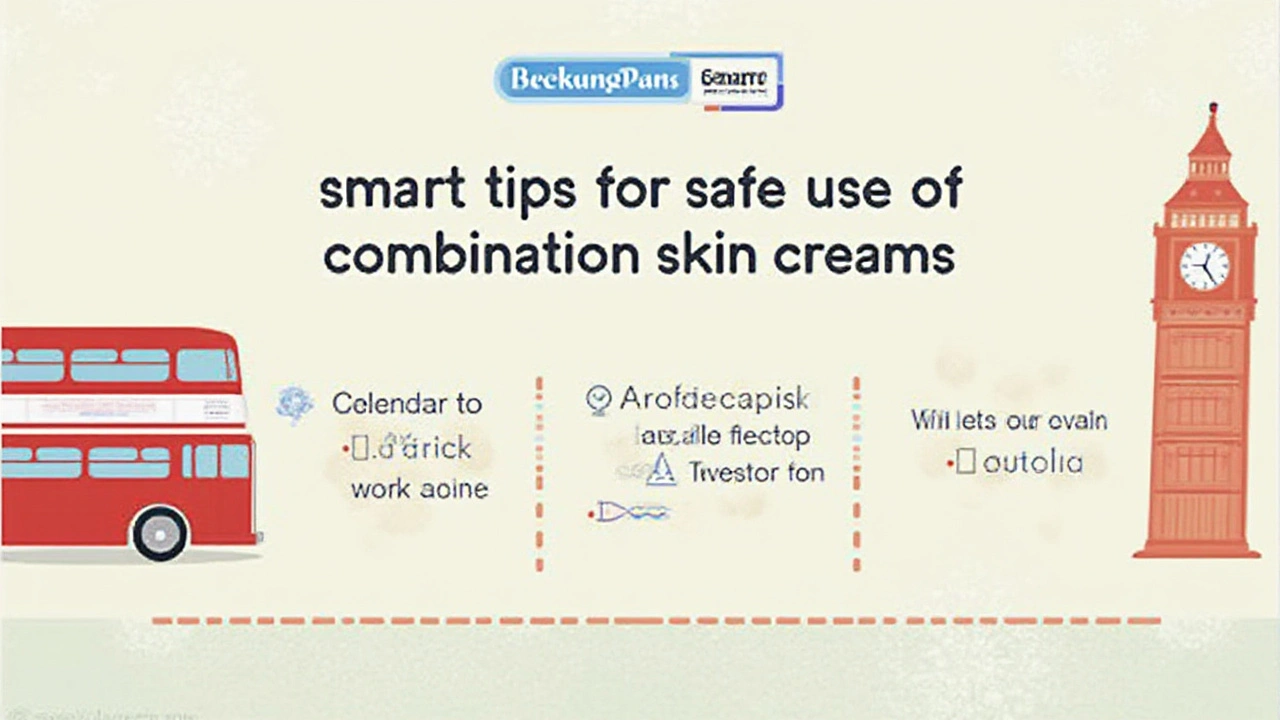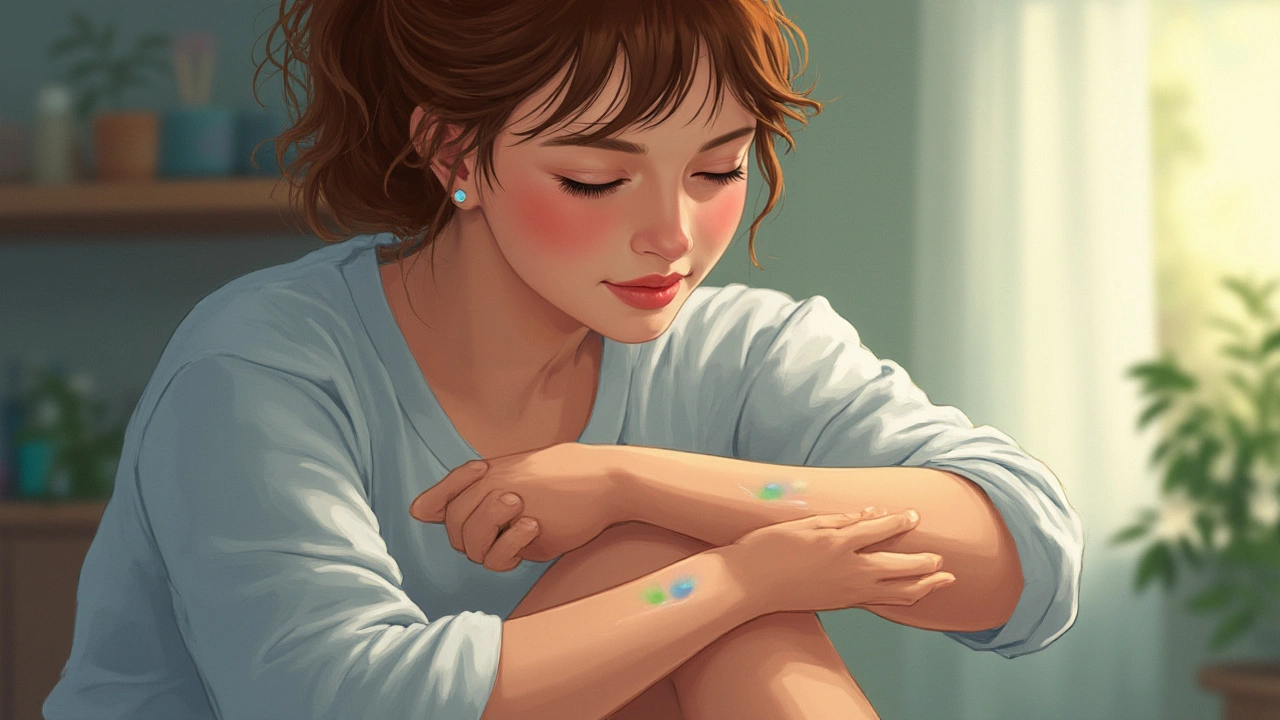If you’ve ever dealt with a stubborn rash that just won’t quit or an itchy patch that keeps coming back, you know how frustrating skin conditions can be. For lots of people, especially parents like me trying to stop a kid from scratching himself raw during soccer season, it feels like you need a miracle cream. That’s where Lotrisone steps in—this isn’t your typical over-the-counter skin ointment. It packs a combo punch of clotrimazole (an antifungal) and betamethasone (a corticosteroid) and gets prescribed for some tough fungal skin infections that just won’t go away with single-ingredient stuff.
What Makes Lotrisone Different and How Does It Work?
Here’s the thing with Lotrisone: it’s specially designed for people who have a skin infection caused by fungus, but with an extra dose of redness, swelling, or itching. Regular antifungals deal with the fungus, but sometimes the inflammation is so intense, it needs more help. That’s where the corticosteroid, betamethasone, comes in.
Clotrimazole, one of the main ingredients, messes with the cell walls of the fungus, making it impossible for it to grow or survive. This means it tackles things like athlete’s foot (tinea pedis), jock itch (tinea cruris), and ringworm (tinea corporis). On the flip side, betamethasone acts fast to bring down swelling, irritation, and itching—basically convincing your body to chill out so you can heal.
A cool fact: the U.S. FDA approved Lotrisone back in 1990, and it’s been a staple for dermatologists ever since. It comes as a cream or lotion, and doctors recommend using it only for limited time periods (usually no more than 2 weeks), because long-term steroid cream use can cause more harm than good, especially for kids.
Here’s a quick look at what makes Lotrisone effective:
| Active Ingredient | Role | Common Side Effects |
|---|---|---|
| Clotrimazole (1%) | Fights fungal infection | Burning, redness |
| Betamethasone dipropionate (0.05%) | Reduces inflammation | Thinning skin, stretch marks |
So, if you notice that regular antifungals just don’t cut it for your inflamed, red rash, your doctor might turn to Lotrisone. It’s not meant for everyday itchy skin or minor rashes caused by allergies. It’s for true fungal infections that come with a wallop of irritation, like a child’s sports-tangled foot caught in a sweaty old boot (trust me, I’ve seen it on my son Oliver).
One thing that surprises most folks: you shouldn’t put Lotrisone on the face, underarms, or groin unless a doctor says so. Those spots absorb steroids more easily and are riskier for side effects. Always use the smallest amount possible.

When (and When Not) to Use Lotrisone
This cream might look like a one-size-fits-all miracle when you first get that itchy patch, but there’s a right and wrong time to use it. Doctors usually prescribe Lotrisone when someone has a confirmed fungal infection that’s also very inflamed. You shouldn’t reach for it if you just have irritation, or a rash that’s not fungal—like eczema, psoriasis, or rosacea. That’s because corticosteroids can actually make some of those conditions worse, or even hide important signs of infection.
For athlete’s foot, the cream has to be used for up to two weeks, and you should always follow these golden rules:
- Wash and completely dry the affected area before applying.
- Use just enough cream to cover the spot—more isn’t better.
- Don’t wrap or bandage unless a doctor tells you (it boosts absorption and side effects).
- Avoid getting cream in your eyes, nose, mouth, or on open wounds.
- Wash your hands after applying (unless you’re treating your hands).
- Don’t use on kids under 12 unless a doctor says it’s okay, and never use diapers or plastic pants over treated areas.
- Don’t use for longer than prescribed—even if the rash looks better—because steroids can cause thinning skin and make you more likely to get another infection.
Lotrisone is not a substitute for antifungal powders or sprays used to keep shoes and sports gear dry. Fungi thrive in moist, warm places. If you put the cream on but keep wearing sweaty shoes or don’t change socks, the infection may come right back. Doctors often recommend cleaning and thoroughly drying shoes and socks, plus sometimes using a separate antifungal powder to stop the fungus from spreading.
If you notice the cream is not working, the area’s spreading, or you see thick yellow crusts (signs of possible bacterial infection), stop and call your doctor straight away. Using this cream for the wrong thing can actually hide worse problems underneath. For example, a study from the Australasian Journal of Dermatology in 2023 found that nearly 20% of cases of chronic fungal rash treated with steroids ended up getting superinfection by bacteria—because the steroid suppressed normal immune response. That’s a big deal, especially for kids or older adults.
Also, don’t forget about common sense. You can’t use Lotrisone to prevent infections; it’s only for treatment. Don’t share your tube with family members. Fungal spores can live on towels, sheets, and even pets—yep, cats can give ringworm to humans. Disinfect shared surfaces, don’t share linens, and throw socks in a hot wash.

Side Effects, Safety, and Smart Use Tips for Lotrisone
No medicine is risk-free, and Lotrisone is no exception. Most folks tolerate it well for short periods, but the longer you use it or the bigger the surface, the riskier it gets. The most obvious side effects: burning, stinging, irritation, or rash where you put the cream. Sometimes, the skin can get thinner, lighter, or develop stretch marks (even in adults). These problems pop up more often in sensitive spots like the face or groin—or in little kids, whose skin soaks up more medicine because it’s thinner.
Prolonged use of steroid-containing creams can mess with your body’s normal hormone balance. For example, if someone slaps on Lotrisone for weeks at a time over a large area, the steroid might start affecting the adrenal glands, leading to adrenal suppression. That’s why you’ll never see doctors handing out unlimited refills of products like this. They want people back for follow-ups to check the rash and prevent side effects.
Here are a few things to keep in mind for the safest, most effective use:
- Stick to the smallest amount that covers the area; use your fingertip as a guide (a pea-sized dab usually does it).
- Don’t use it on broken or oozing skin; and don’t apply on the face unless your doctor insists.
- If your child’s using it, keep a close eye. Kids absorb more through their skin—watch for changes in growth, mood, and behavior.
- If you’re using it close to private areas, be careful—absorption there is higher, raising the risk for thinning skin.
- Don’t use for more than two weeks unless directly told by a doctor. If you miss a dose, just use the next one; don’t double up.
- If you get redness, swelling, oozing, or any new symptoms, call your doctor to rule out allergy or superinfection.
- Pregnant or breastfeeding? Talk to your healthcare provider before using—there aren’t enough big studies to say it’s 100% safe in pregnancy, so always double-check.
Now, for a fun stat: The average prescription for Lotrisone cream in Australia in 2024 cost about AUD 28 for a 15g tube, and most private health funds do not cover it as a first-line option. Doctors are more likely to recommend just plain clotrimazole (without steroids) if your symptoms aren’t severe. So always ask your doctor if you really need such a strong combo or if a simpler cream will do the job.
A lot of folks online ask whether they can use Lotrisone for things like diaper rash or acne. Please don’t. This isn’t the right kind of cream—it’s too harsh and can actually lead to worse infections or scarring. For anything on a baby’s skin, milder options like plain barrier cream or simple antifungals are best. For acne, stick to products made for that purpose.
I once put the wrong cream on Oliver’s rash after a camping trip—and learned the hard way that not every itchy mark should get a steroid. Within a couple of days, the rash was burning and had started to weep. Looks like the cream kept the fungus going while hiding how bad it was getting. Lesson learned: check with a pharmacist or your GP if you’re unsure what’s causing the rash before using combo creams like Lotrisone.
If you end up prescribed Lotrisone, set a phone reminder to stop after the advised number of days—even if you still see a faint mark. Some marks take time to fade after the infection is killed, and overusing can backfire. If things aren’t better or get worse, definitely ring your doctor. Sometimes, getting a tiny skin scraping or fungal culture helps target the right treatment and keeps things from dragging on for weeks.
Bottom line—Lotrisone is powerful because it attacks both the itch and the fungus. Used properly, it’s a real skin-saver for tough cases. Respect its strength, pay attention to changes in your skin, and make sure you don’t let it sit in the back of a medicine cupboard for months. And always—always—pair it with good hygiene to really get rid of the problem for good.

John Moore
July 17, 2025 AT 23:20Lotrisone's combination approach really intrigues me. It's not just an antifungal but also includes a steroid, which means it tackles inflammation along with infection. I appreciate when treatments consider the whole picture, especially for stubborn skin issues that just won’t clear up. I've seen some friends struggle with fungal infections that linger despite using common antifungals.
However, I wonder about the safety aspect given the steroid component. Steroids can have side effects when used improperly, especially on sensitive skin areas. It would be great if the post could mention more about how to minimize risks when using Lotrisone and what specific side effects to be cautious about.
Also, for those who have used it, did you notice how fast it worked? Was it really effective for your particular infection? Sometimes, these combination medicines sound promising, but their real-world effectiveness varies. Just curious to hear personal experiences.
Adam Craddock
July 21, 2025 AT 05:10Thank you for the informative post. As someone who prefers a formal and methodical approach to medication, I find the dual-action mechanism of Lotrisone quite logical—addressing both fungal pathogens and inflammatory symptoms concurrently.
Nevertheless, I am particularly interested in the pharmacodynamics involved. For instance, how does the corticosteroid component interact with the antifungal at the molecular level? Are there any documented cases of resistance development due to combined usage?
Additionally, further details regarding the recommended duration and frequency of application would be beneficial. Overuse of topical steroids can lead to complications, so delineating clear guidelines is essential for safe use.
Kimberly Dierkhising
July 21, 2025 AT 13:50This post succinctly highlights the clinical utility of Lotrisone, which synergistically integrates an antifungal and a corticosteroid, offering a multipronged approach to treatment.
From a dermatologist’s perspective, the corticosteroid component mitigates inflammatory cytokines that exacerbate symptomatology, while the antifungal inhibits ergosterol synthesis, impairing fungal cell membranes. This dual modality can significantly expedite resolution in cutaneous mycoses resistant to monotherapy.
However, clinicians should remain vigilant concerning adverse events like cutaneous atrophy, telangiectasia, or tachyphylaxis associated with prolonged corticosteroid exposure. Patient education on judicious application is paramount to optimize therapeutic outcomes and minimize iatrogenic sequelae.
Rich Martin
July 25, 2025 AT 16:56Honestly, the mechanistic explanation is fine, but what's really on my mind is why people often rush to use such combo creams even when simpler antifungals might do the job. Steroids, even topical ones, mess with your skin’s natural defenses and can mask infections temporarily, making them worse in the long run.
There’s also the issue of accessibility and over-the-counter availability in some places, which leads to misuse. I would love to hear more about when exactly Lotrisone is recommended versus when a simple antifungal cream suffices. Are doctors monitoring usage properly, or is this just another band-aid solution?
The post should emphasize that steroids in antifungal creams should not be taken lightly, especially in chronic or widespread infections. The balance between efficacy and safety is delicate here.
Deidra Moran
July 26, 2025 AT 06:53I can't help but question the broader implications of such combination creams. First off, why do we need steroids mixed in at all? Is this just a pharmaceutical play to push stronger meds onto consumers, leafing them vulnerable to side effects they don't fully understand? The post skirts the fine print here and looks overly optimistic.
Moreover, who controls how these are distributed? In some markets, you’d expect tighter controls, but reality can be murky. There’s plenty of evidence suggesting indiscriminate use could lead to systemic absorption risks, even with topical application.
Are regulatory bodies aware? Or is this yet another under-the-radar profit scheme disguised as 'healthcare' innovation? I would urge anyone to research deeply before using such combos.
Zuber Zuberkhan
July 29, 2025 AT 23:10Interesting points all around. I want to highlight the encouraging aspect of Lotrisone's design for those who have been fighting long and hard against persistent fungal infections. The combination reduces inflammation quickly, which can be a ray of hope for many frustrated patients who don’t see progress with antifungals alone.
That said, I agree that caution is necessary. It’s about finding the right balance and making sure patients understand usage instructions clearly. Sometimes the fear of side effects overshadows the genuine benefits if used correctly under professional supervision.
I believe more education and accessible dermatologic consultations would help bridge this gap, especially in areas where misinformation is rampant or medical access is limited.
Mr. Zadé Moore
August 2, 2025 AT 20:30Let's not beat around the bush here. The real question is the intrinsic value of combining steroids with antifungals in topical formulations. On paper, it sounds like a neat gimmick, but do the meds really work synergistically, or is it just a way to get more prescriptions written?
The antifungal properly addresses the infection, but steroids dampen immune response locally, potentially allowing the fungus to persist or rebound. Chronic steroid overuse leads to poor skin integrity which only invites further complications. Frankly, it's a shortsighted remedy with more downsides than benefits in unregulated hands.
The post glosses over the significant risks of steroid resistance and unwanted systemic absorption. I'd recommend a more nuanced discussion on where exactly the treatment truly merits usage versus safer, targeted alternatives.
Brooke Bevins
August 3, 2025 AT 07:53I really appreciate this thorough breakdown of Lotrisone. Having chlorinated antifungals plus corticosteroids in a single formule is super convenient for patients who struggle with itchy, inflamed fungal infections. I’ve personally seen good results in balancing inflammation and infection, improving patient comfort fast.
However, I’m also aware that misuse can lead to rebound issues or skin thinning. So, a strong part of the advice should be emphasizing compliance with dosage and treatment duration. Patients should also be advised to communicate any adverse symptoms immediately.
What I’d love to add is the importance of follow-up skin evaluations during treatment to monitor progress and side effects.
Vandita Shukla
August 8, 2025 AT 00:36All said, it’s a bit unbelievable how casual people are with such potent combinations. Just imagine slathering a steroid on fungal infections without medical oversight—that's a disaster waiting to happen. Fungal infections might look better superficially but worsen underneath.
The post could be clearer about risks like suppression of skin immunity or the potential for steroid-induced acne and other dermatological woes. My suggestion: always get a proper diagnosis and never self-medicate with steroid combos. The ramifications aren’t trivial.
Susan Hayes
August 11, 2025 AT 12:26Right, this post touches on the basics but doesn’t dig into the nitty-gritty nuances of Lotrisone’s use, which frankly ranges from miraculous to disastrous depending on how it's applied. Being an aggressive advocate for proper healthcare use, I can attest that unmonitored usage of steroid-antifungal combos encourages more resistant fungi strains and worsens patient conditions over time.
Unfortunately, a lot of people just want quick results and ignore instructions, leading to rampant misuse. More regulation and patient education should be shouted from the rooftops.
And no, it’s not all conspiracy theories—there are real consequences that are well documented but rarely emphasized.
Jessica Forsen
August 16, 2025 AT 01:56Oh great, another cream that sounds like a miracle until you actually try to use it and realize the fine print is a maze. Honestly, these combo creams tend to make people overly confident about fixing everything fast, and then bam! Side effects come knocking.
Yes, I get it, inflammation is annoying, fungal infections are stubborn, but this sort of combo needs to be used with some common sense. That means doctor’s input, monitoring, and patience. It’s not the magic wand people imagine.
For those interested, I’d say definitely do your homework, and don’t take the post’s overview as gospel. There’s so much more lurking beneath the surface about these treatments.